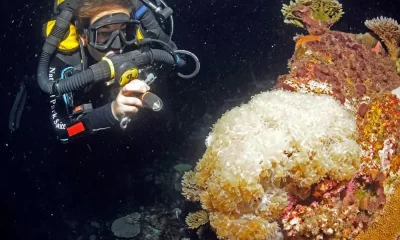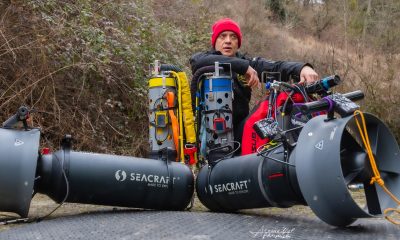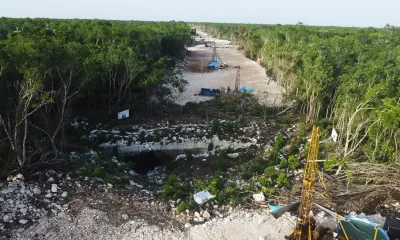Diving Medicine
Confessions of a Chamber Diver
Interview by Tim Blömeke. Images courtesy William Howell unless otherwise noted. Special thanks to Duke consulting professor and biomedical engineer Dr. Rachel Lance who suggested this story . All subjects provided express written consent for the use of their images and names for this article.
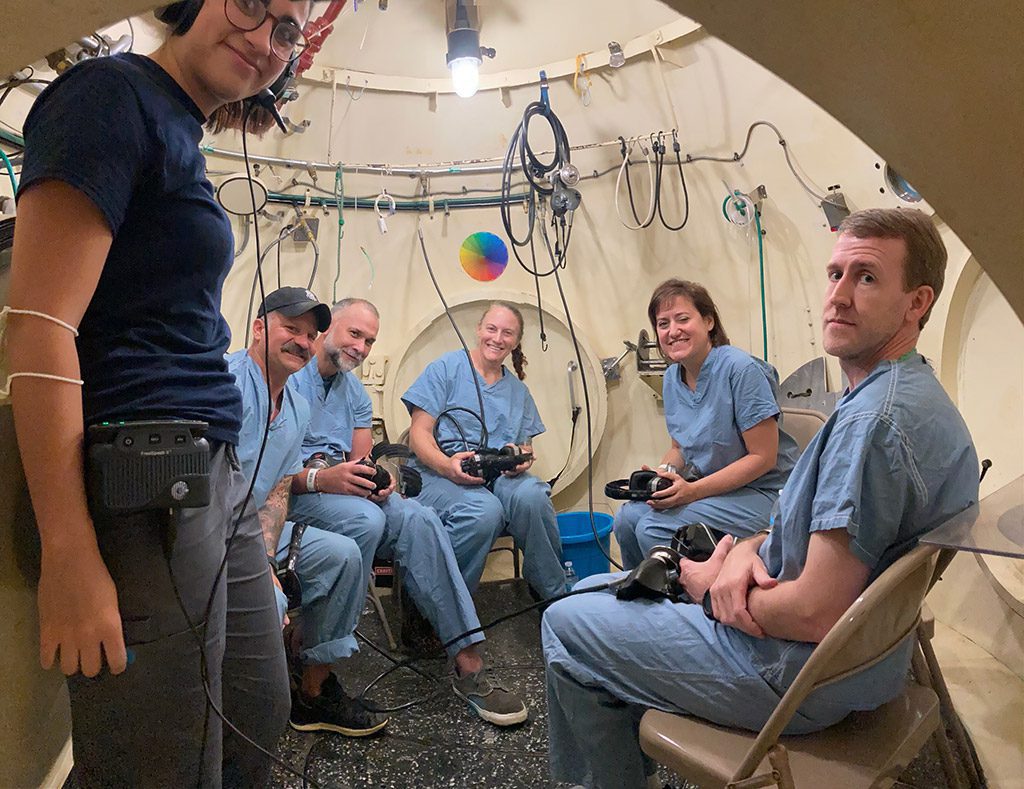
Forty-one year old computer scientist and cave diver Mike Winters, has been a frequent lab rat, err test subject at Duke Center for Hyperbaric Medicine & Environmental Physiology, and has participated in most of their hyperbaric research studies over the last 15 years. The low profile, former special operations soldier, now a software researcher and endurance athlete, says he has always been interested in advancing hyperbaric science and medicine, as well as learning the limits and capabilities of his own body in various extreme situations.
Mike, you must be one of the most seasoned chamber divers out there. How does one get a gig like this?

I first got into chamber diving when I was an undergraduate university student. I was heavily involved in our SCUBA leadership program – helping to teach classes, maintain equipment, etc. It just so happened that my diving instructor, a the head of the University’s Scuba program, was a longtime friend of a man named Gene Hobbs.
At the time, Gene was in charge of the Duke Hyperbaric Chamber. I don’t recall his exact title or responsibilities, but he mentioned that the chamber was doing a research study and looking for candidates, and suggested I go try to participate. He also ran the Rubicon Foundation Research repository at the time and had an Explorer’s Club flag. Great guy, endless fount of knowledge.
As a broke college student who was also very interested in the science behind it, I was extremely interested (this was maybe in 2007-2008). Then I got on the Duke chamber’s mailing list and have been getting invited to participate in studies ever since.
Anyone can contact their local hyperbaric chamber and inquire about current or future studies. For that matter, universities and hospitals are often running various research studies on a range of subject areas.
Do you log your chamber dives? How many have you done?
I’ve logged some of them, but I unfortunately have not been very organized or fastidious with my regular diving logs or my chamber dives. I did contact the research coordinator at Duke and got a list of most (All? I’m not sure) of the studies I’ve participated in over the years. See: “List of Studies” below.
Most of those involved multiple chamber dives and/or multiple days at the chamber. One of them involved living in the chamber for about three days. I would guesstimate I have about three dozen dives in the chamber at this point.
How would you describe the experience to someone who has never been in a hyperbaric chamber in their life?
If I had to pick just one word, I’d say interesting or perhaps surreal. It’s hard to describe the entire experience, and each study has been a bit different. Before you even enter the chamber area, you walk down a hallway lined with display cases full of old diving gear, photos of astronauts and researchers who have been here or been involved with the chamber over the decades. It’s an interesting walk through history.
Seeing the chamber control room area kind of feels like a smaller version of the Apollo 13 movie—it’s an area of maybe 20’ x 20’ [6m x 6m] with large banks of controls. Some of them are video monitors, but mostly it’s just large dials and gauges—a lot of old, manual analog equipment which sits next to the chambers themselves. It’s all in one very large room, with a second story “loft” area built above parts of it.

How old is the chamber?
I believe the chamber was originally built back in the 1960s or so, and has done some extreme dives. They even had three people live at ~2,250 ft/686 m deep for a month or so back in the late nineteen seventies and early eighties. Duke Hospital is also quite old; walking into it gives you a sense of history.
At no point does it feel rickety or unsafe; you can just tell that it has been here for a while. It was built and designed in a different era, and it was built to last. It’s well used—the paint is fading in some places or scratched and peeling in others, and there are things built into the walls of the chamber that feel decades out of date but are still functional.
The staff are all incredibly knowledgeable and very friendly. These are some of the people who have literally written the books on hyperbaric medicine, and they will joke around with you and tell stories. It’s a very friendly and casual atmosphere. At the same time, it’s immediately obvious that these people are very, very good at what they do.
Please describe a chamber dive for us.
Doing a chamber dive is very different from a real dive, namely that you are (or can be) in a dry chamber most of the time, depending on the dive and chamber configuration. It can be fairly loud at times, as the pumps are pressurizing the large steel room you’re in. Sound carries and echoes well there.
Rapid pressure changes also alter the temperature drastically: a fast descent can get quite warm, while a drop in pressure can get quite chilly. You’re also able to notice a difference in your voice because of the denser gas you’re breathing. Anyone who has used a full-face mask while diving may have experienced this before, but for most divers this would be a new sensation. For me personally, I sometimes feel nitrogen narcosis more acutely in a chamber than I do on a real dive—not so much the mental aspects, but the warmth and dizzying effect of it.
On dives where I’ve had to exercise in a wet chamber, that’s also a bit unique, as they have custom built a special underwater bicycle. In some configurations, you sit in it similar to a recumbent bicycle. In others, you lie down face first. On some dives I used a normal SCUBA regulator, on others, a full-face mask. Some dives have required the flying of a simulated aircraft or submarine while listening to radio commands and juggling other tasks, like managing fuel leaks in the craft. Each brings its own physical and mental challenges.
In addition to the time spent with the actual diving inside the hyperbaric chamber, there usually are some additional medical portions; for example, ultrasounds and ECGs. Many of the studies I’ve participated in required blood draws, arterial catheters, or a Swan-Ganz catheter, which is a small balloon that is inserted into an artery at the wrist or elbow and then run all the way into the heart, where it can be inflated to lock it into position, allowing researchers to draw blood from directly inside the heart.
Many studies have also involved physical fitness tests, or a VO2 max test, which basically makes you exercise at increasingly high levels until you are unable to perform or endure the pain any longer.
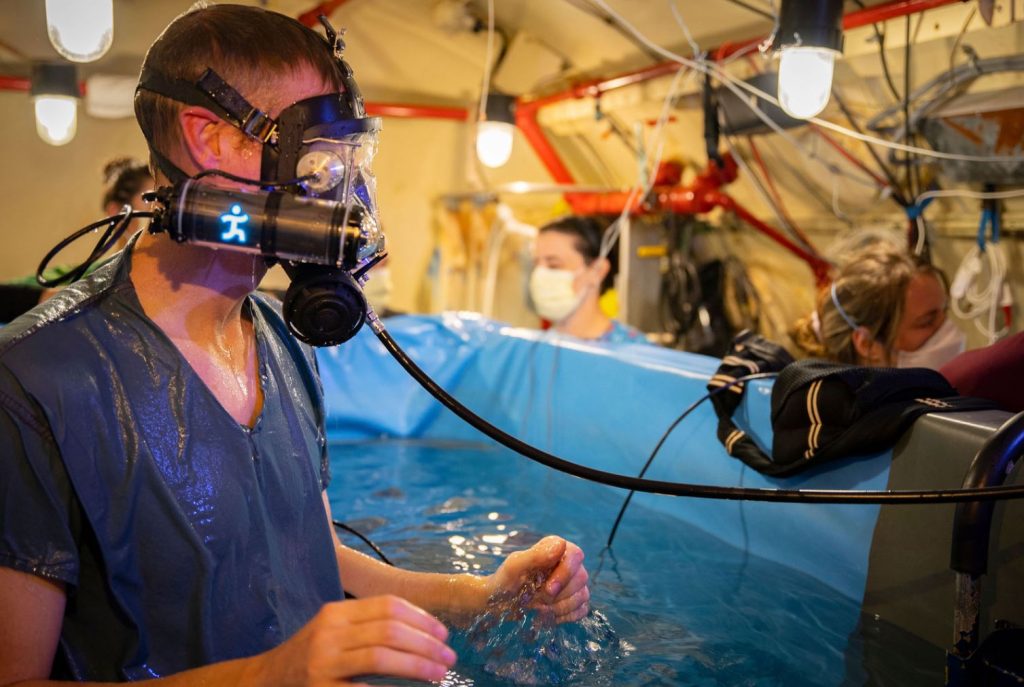
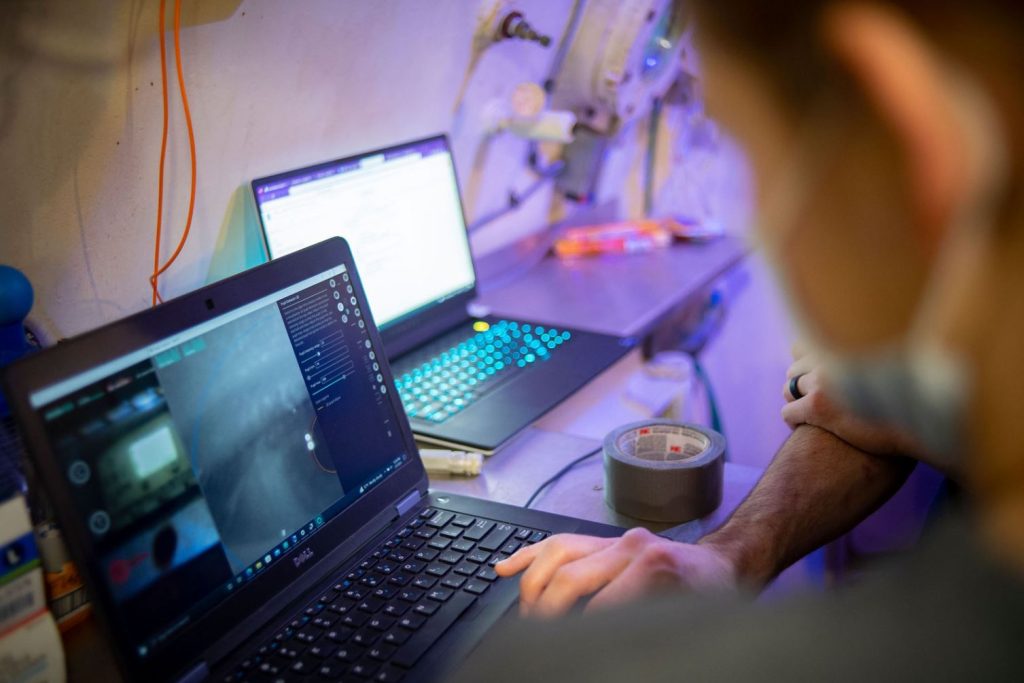
Going back to your first ride, what was most unexpected to you from a subjective, sensory standpoint?
It’s been so long since my first chamber dive (15-ish years?), and I’ve done so many different studies at this point that I actually don’t recall my first experience. At the moment, I’d say the most unexpected thing was the way narcosis tends to feel so much more pronounced in a dry chamber than on a real dive. I’ve never really felt narked on a real dive, even when diving moderately deep or exercising hard at depth, but I’ve felt it on a number of different chamber dives, even while resting.
In broad strokes, could you describe some types of experiments that you took part in?
Some of them were cognitive tests – breathing various different gasses (several involved high CO2 content) and seeing what sort of cognitive decline they cause. This is measured with increasingly complex cognitive tasks and hand-eye coordination tasks. This is really important for rebreather divers.
Others were trying to determine the correlation between exhaled CO2 and the CO2 levels directly in the heart. Again, important for rebreather divers from a monitoring perspective, if you can put a CO2 sensor in the exhalation part of the loop.
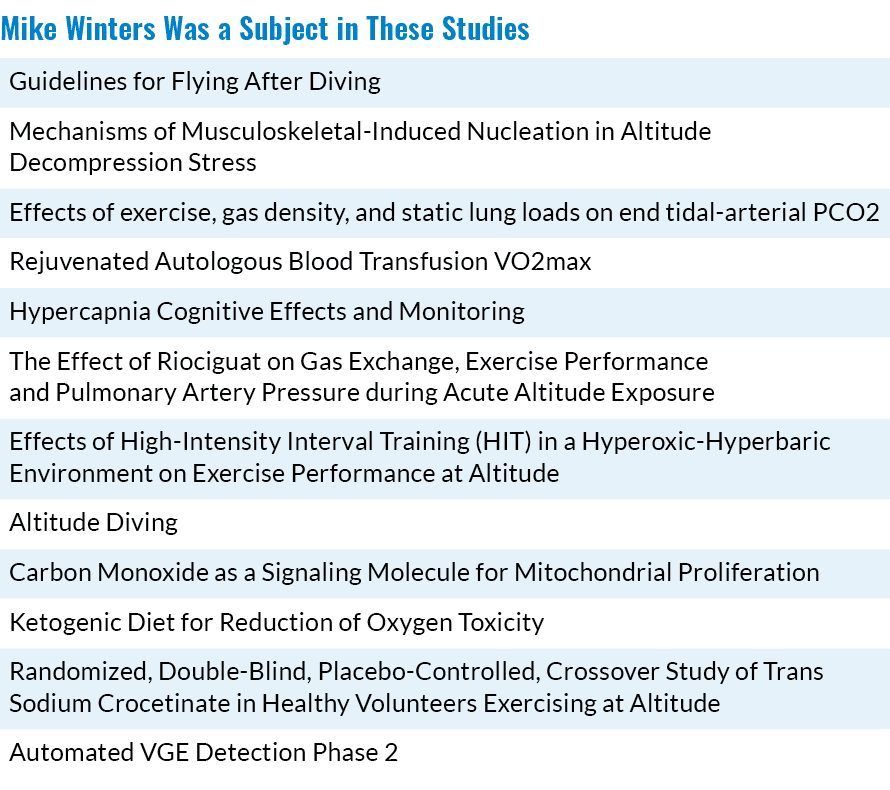
Some of the studies involved diving at altitude, or flying after diving, and trying to develop safer ways to do that. Some studies were testing new medications, or new applications for existing medications, and how they affected the body in various ways. One involved seeing if breathing low concentrations of carbon monoxide could increase or stimulate muscle growth and repair. Another involved seeing if a three-day ketogenic diet would enhance resistance to oxygen toxicity (which for me was a massive change, for others it had less of an effect). My most recent study was helping them to build an AI/ML system to detect bubbles in ultrasound videos.
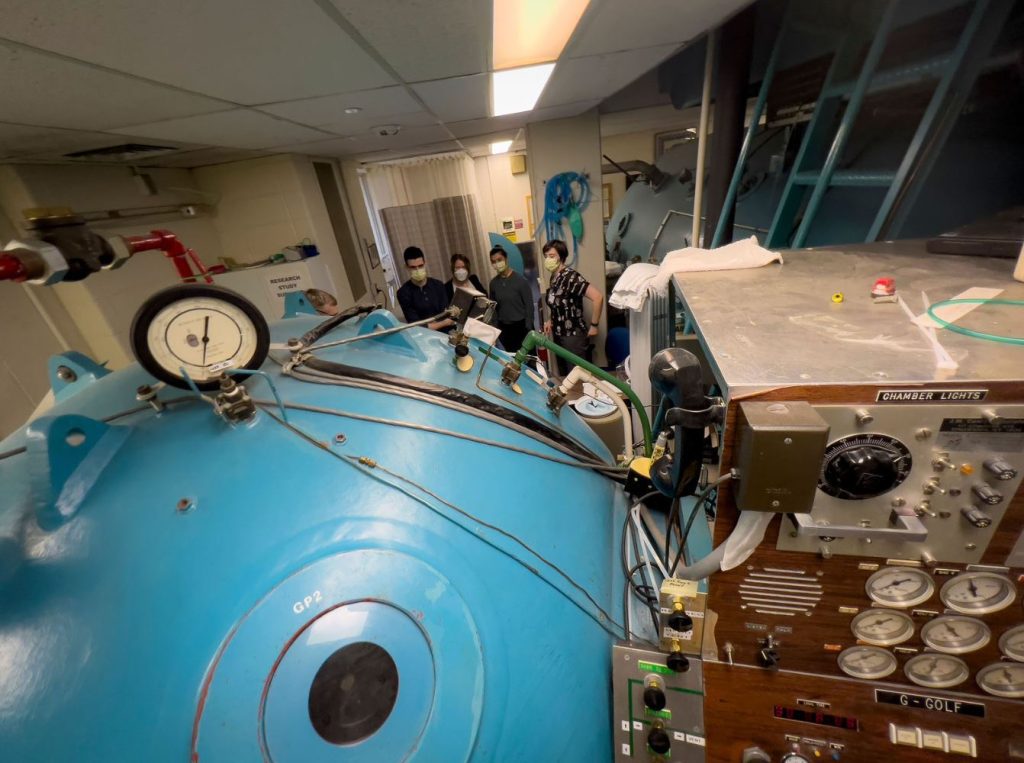
Among these studies, which are the ones that stand out to you and why?
Some dives have required breathing high concentrations of CO2, which is not a very fun experience. I had one dive where I essentially blacked out, but was still conscious and trying to do the tasks. I can distinctly remember the change in taste when switching over to the mix with the elevated CO2 content, and thinking to myself “you only have to do this for five minutes; just tough it out”.
As a military veteran who served in a special operations unit, and former marathoner and ultramarathoner, I’m used to pushing through pain and discomfort. That thought was the last thing I remember. A few minutes later, the chamber attendant was yelling in my ear that I could come off the gas now, and I believe she even had to take the regulator out of my mouth. I’m not sure. That five-minute window of time is completely lost to me.
However, the scary thing is that I was still exercising—underwater, at about 165 ft (50 m) of depth if I recall correctly—and trying to pilot the sub, basically a flight simulator video game, designed by NASA, I believe. I am sure I was doing a horrible job of it. I was conscious and active, but the brain just wasn’t there anymore; the lights were on but nobody was home, which gives me a very healthy respect for some of the dangers of rebreather diving. They told me I had the highest CO2 tolerance of anyone they’d ever seen, which is not a good thing, as it means I can get myself into trouble by working too hard on a deep dive, or by “enduring” a rebreather with a scrubber failure.
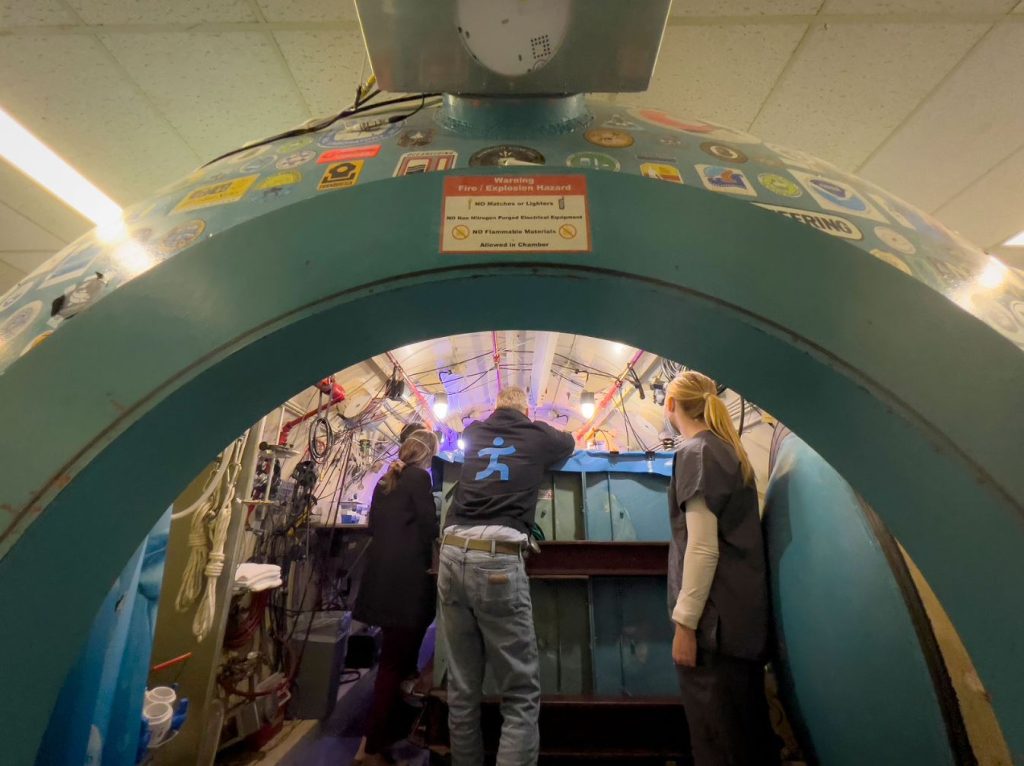
Another really memorable one involved living in the chamber for three days with three other people. We were in an approximately 8 ft. (2.4 m) diameter sphere the entire time, living at high altitude, except for when we went into the adjacent chamber to do our wet dives. While there were some interesting physiological changes from living and diving at altitude, the big takeaway for me was a newfound respect for astronauts, who have to live in such a small space for an extended period of time. I’m not claustrophobic at all – I’m a cave diver and quite used to tight places, but the boredom and lack of autonomy from being confined in the chamber was interesting.
Another memorable study involved muscle biopsies. They essentially had to cut and drill into the thigh, insert a small tube about the size of your pinky finger about three inches deep, and then suction or vacuum out a small chunk of muscle. That was not particularly fun. I was numbed, so it wasn’t painful, but I could still feel the pressure of the procedure, which was a very strange experience.
Many of the studies I’ve done involved arterial catheters or Swan-Ganz lines. I’ve probably had 10-15+ of those over the years, which always shocks any doctor who discovers that. It’s not really an uncomfortable experience, although there is a bit of pain at the incision site, and it takes a few days or a few weeks to fully heal. But mostly it’s just an odd experience watching a device getting inserted into your heart on the monitors, or feeling your heart skip a beat sometimes because of the device partially blocking one of the valves or the blood flow. It feels a little “different” or “off”—you know something is there—but it doesn’t really affect you very much.
What are the most important things you learned as a test subject in scientific experiments?
I learned a lot about my own body and its limitations, which is something I’ve always been curious about. As an athlete, all the VO2 max tests I’ve done over the years have been useful benchmarks for me. I remember using some of those as training aids when I was preparing for an Ironman.
But more than that, I’ve learned so much about how my body reacts to carbon dioxide, both physically and mentally. I’ve also learned about my susceptibility to oxygen toxicity and how much it can change when being in ketosis, which makes me feel much safer and more comfortable for my real-world decompression dives.
In addition to all the above, I’ve learned more about decompression theory, hyperbaric medicine, and physics, as well as various aspects of medicine and anatomy. As a former combat medic and EMT, that part fascinates me. Most importantly perhaps, I’ve met some really great people over the years, and I consider myself fortunate for having had the opportunity to learn from them.
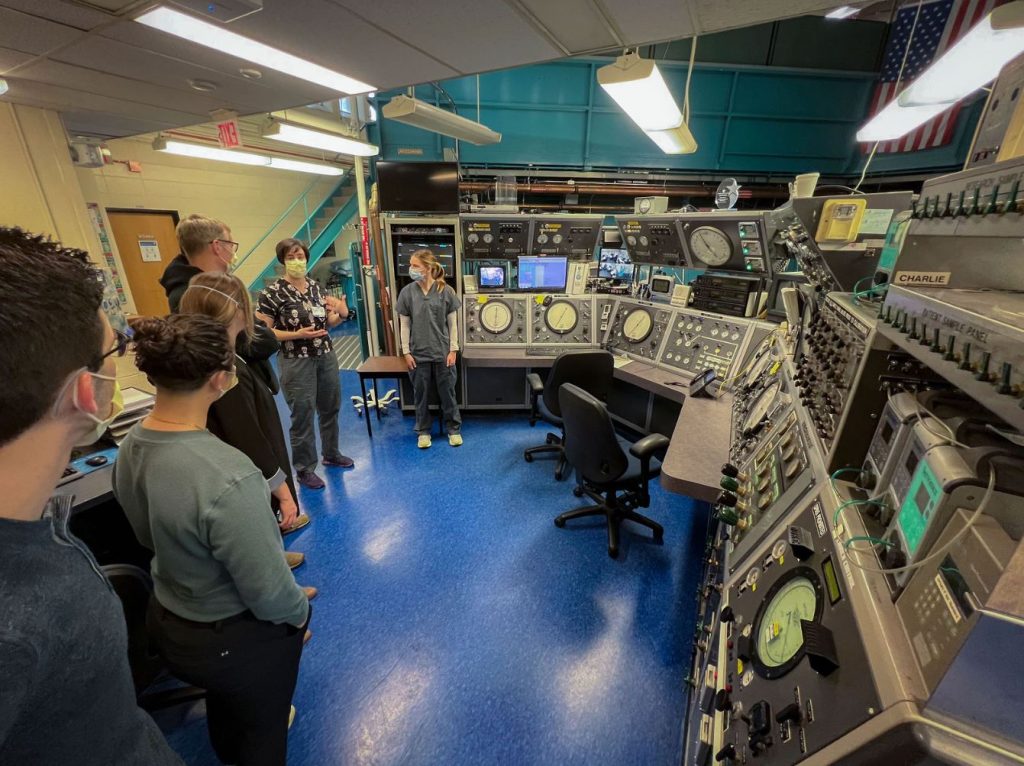
Is there anything you learned during your chamber dives that you’ve been able to apply in your wet diving practice?
For me, the ketogenic study showed me that I can massively increase my own oxygen tolerance. While this is valuable information, I choose not to do that diet because I’m too lazy to be very precise with it. However, knowing my own O2 limits helps me stay within a safe window during my own decompression dives.
The several studies involving CO2 probably had the biggest impact on me personally. I’ve seen how it affects my physical capacity, both in an exercise sense and a lingering fatigue sense, as well as a mental capacity. I even had the one experience where I essentially blacked out.
With all of that, I have a very healthy respect for rebreather failures, and even though I am a cave and technical diver, and some of my dives have been in the six hour range, all of my “serious” dives are open circuit. I view rebreathers as a useful tool, but not one that I need for my diving at the moment.
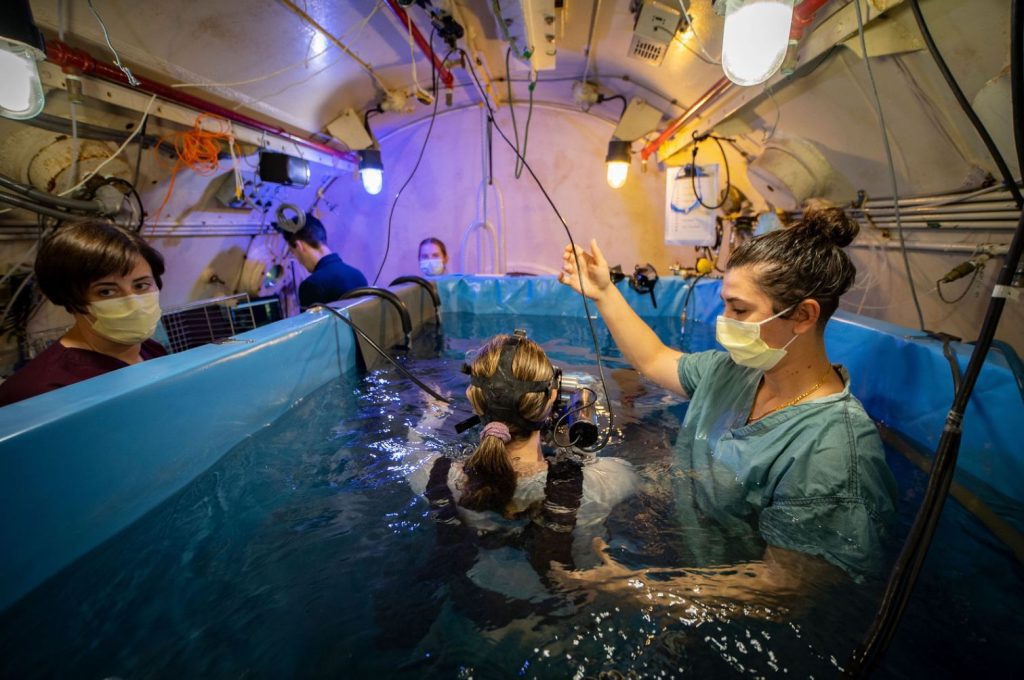
As a final question, what kind of diving do you do when you actually get in the water?
I’m currently a bit landlocked where I live, so most of my diving has been in a local rock quarry. But my biggest love in diving are caves. I love the mental and physical challenge, the planning and preparation, the excellence and focus that it demands, and the exploration aspect. It’s an incredible feeling to be in a place where, in the history of our species and our planet, only a small number of living things have ever been.
Mike, this has been excellent. Thank you very much for your time, and safe diving always.
You’re very welcome.

Special thanks to photographer Christopher Wilson for his help illustrating this story. Check out his amazing work at: ChristopherWilsonPhotography.com
DIVE DEEPER
Other InDEPTH stories by Tim:
DAN Europe blog: Highlights from the first day of Rebreather Forum 4 by Tim Blomëke
DAN Europe blog: What You Missed from Day Two of Rebreather Forum 4 by Tim Blomëke
DAN Europe blog: Insights and Breakthroughs: A Recap of Day Three at Rebreather Forum 4 by Tim Blomëke
InDEPTH: When Easy Doesn’t Do It: Dual Rebreathers in Extended-Range Cave Diving by Tim Blömeke (SEP 2022)
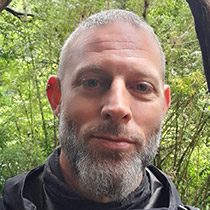
Tim Blömeke teaches technical and recreational diving in Taiwan and the Philippines. He is also a freelance writer and translator, as well as a member of the editorial team of Alert Diver. For questions, comments, and inquiries, you can contact him via his blog page or on Instagram.
























